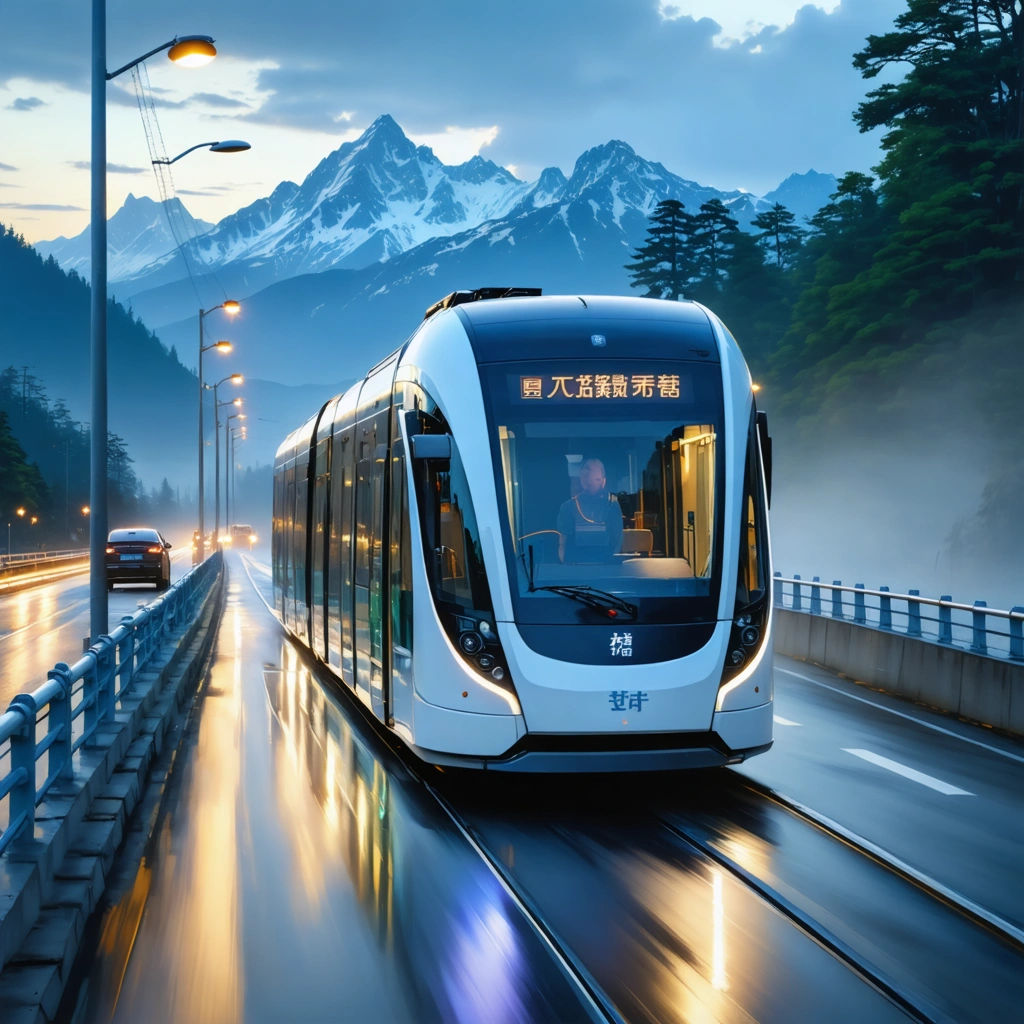
Introduction to the New Articulated Electric Bus
The rapid evolution of urban transit systems has paved the way for innovative solutions in public transportation. The Zhongtong N18EV articulated electric bus is a prime example of this transformative change in the industry. Emerging from China and navigating challenging terrains, the N18EV has quickly become synonymous with sustainable mobility and technological breakthrough. Its recent trials in Bogota, after an impressive journey that involved crossing three mountain ranges, highlight its potential to adapt to diverse environmental conditions and urban demands.
Journey Through Extremes: Overcoming Geographic Challenges
Crossing Three Mountain Ranges
The journey of the N18EV was not merely a demonstration of mechanical endurance but also a testament to advanced engineering. During its voyage:
- The bus left the Pacific Port of Buenaventura.
- It successfully navigated legal and bureaucratic hurdles during transit.
- The route traversed rugged terrains, culminating in a peak altitude of 2020 meters above sea level.
- After reaching the summit, it safely descended into new testing grounds.
This milestone has underscored the critical balance between performance and eco-friendly design. With the mountainous trial serving as an empirical case study, the bus has demonstrated its capability to operate in environments where conventional vehicles might struggle.
Challenging Terrains and Technical Adaptability
The N18EV’s design incorporates several adaptive features crucial for high-altitude functionality:
- Enhanced Power Systems: The vehicle uses state-of-the-art battery management systems designed to handle drastic temperature variations and altitude changes.
- Dynamic Suspension: Its chassis is reinforced with a dynamic suspension system, enabling safe navigation over steep gradients and rugged surfaces.
- Optimized Aerodynamics: Despite the increased drag that can occur at higher altitudes, the streamlined body design minimizes energy loss.
These innovations, among other state-of-the-art technologies, are contributing factors in the bus’s wide appeal and operational resilience.
Technical Specifications and Design Innovations
State-of-the-Art Features and Architecture
The Zhongtong N18EV is a culmination of years of design innovation aimed at addressing the needs of modern public transport. Key features include:
- Articulated Structure: Offers enhanced passenger capacity and greater maneuverability within urban centers.
- Electric Propulsion: Fully electric motor systems that drastically reduce emissions and operational costs.
- Smart Connectivity: Integrated telematics that enables real-time data monitoring, route optimization, and fleet management.
- Robust Safety Systems: Advanced driver assistance systems (ADAS) ensure passenger safety while optimizing the driving experience.
Detailed Technical Comparison
Below is a table summarizing some of the core technical aspects compared to standard electric buses in the market:
| Feature | Zhongtong N18EV | Conventional Electric Bus |
|---|---|---|
| Articulated Design | Yes, with multi-segment flexibility | Typically rigid chassis |
| Battery Capacity | High-capacity, optimized for altitude variance | Standard capacity |
| Altitude Performance | Tested beyond 2000 meters elevation | Limited performance in high-altitude regions |
| Connectivity Features | Advanced telematics and fleet data analytics | Basic connectivity options |
Trials in Bogota and Future Prospects
Operational Testing and Evaluation
Bogota has been chosen as the testing ground for the N18EV due to its complex urban landscape and elevation variations. The testing procedure consists of several phases:
- Initial Ramp-Up: Introduction to the city’s transit grid, focusing on reliability and connectivity.
- Performance Under Load: Evaluating the bus’s ability to maintain efficiency during peak hours and heavy passenger loads.
- Real-World Conditions: Running extensive diagnostic tests during varying weather and traffic situations.
The urban trials aim to collect extensive performance data that can be used to further refine the vehicle’s capabilities and ensure it meets rigorous international standards.
Economic and Environmental Impact
From a business perspective, the introduction of the N18EV holds significant promise. The following points highlight its impact:
- Cost Efficiency: Reduction in operational costs due to lower fuel consumption and decreased maintenance needs.
- Sustainability: Zero-emission technology positions the vehicle as an ideal candidate for cities aiming to reduce air pollution.
- Market Expansion: An increase in export opportunities and partnerships in emerging markets keen on sustainable transport solutions.
Furthermore, extensive research and feedback from trial runs are being leveraged to analyze the potential return on investment for both public and private sector fleet operators.
Business Strategy and Future Market Expansion
The successful trials in Bogota are expected to act as a catalyst for further international expansion. Key strategies include:
- Strategic Alliances: Forming partnerships with local governments and transportation authorities to integrate the N18EV into city transit operations.
- Technological Advancements: Continuous improvement in electric propulsion and battery longevity to maintain competitive superiority.
- Scalability: Adapting the bus model to address regional demands, including modifications that accommodate diverse climatic and geographical conditions.
- After-Sales Support: Establishing robust service networks to provide maintenance and technical support, thereby ensuring long-term operational success.
The forward-looking business model formulated around the N18EV not only emphasizes environmental responsibility but also profitability in rapidly transforming municipal transit systems.
Conclusion
The Zhongtong N18EV is emblematic of a new era in electric mobility—one that combines endurance, smart technology, and sustainable design to tackle some of the most challenging terrains on the planet. From its rigorous journey through mountain ranges to its ongoing trials in Bogota, this innovative bus has confidently demonstrated its ability to adapt to the demands of modern cities. The convergence of advanced engineering, eco-friendly transportation, and strategic business planning suggests a bright future for the N18EV and other similar high-performance electric transit solutions. The data and insights gathered from these trials will not only benefit urban planning but are also poised to influence global market trends in clean energy transportation for years to come.




